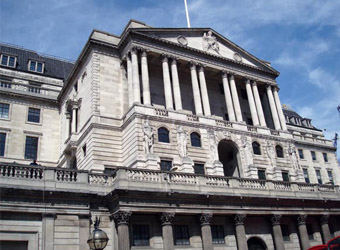The Bank of England sent on Thursday a mixed message on the future pace of interest rate rises ahead of next month’s general election, with a modest downgrade of its 2017 growth forecast and a majority vote to keep rates this month on hold at 0.25 percent.
The only member of the Monetary Policy Committee to vote for an increase in rates in the last MPC meeting before the 8 June national poll was, once again, the external member Kristin Forbes.
Some City analysts had expected her to be joined by another MPC member such as Michael Saunders or possibly Ian McCafferty but in the end both held back.
However, despite the solid vote for no change on the cost of borrowing, the minutes of the meeting relayed that “some members” still thought that it would take “relatively little further upside news” on the inflation outlook for them to support a monetary tightening.
The Bank also said that policy could be tightened “by a somewhat greater extent” than markets have recently been expecting.
GDP growth more than halved in the first quarter of 2017 to 0.3 per cent, down from 0.7 per cent in the final quarter of 2016, prompting many analysts to conclude that the British consumer, which has powered the economy in the wake of last June’s Brexit vote, is finally flagging.
In its quarterly Inflation Report, the Bank of England revised down its full year growth forecast for 2017 slightly to 1.9 per cent, from 2 per cent previously. However, for 2018 the forecast was raised fractionally to 1.7 per cent. There was also a modest upward adjustment for 2019.
The Bank still sees the level of UK GDP in three years’ time relative to before the Brexit vote lower by around 1.5 per cent of GDP, or around £30bn in today’s money.
It also stressed that its forecasts were based on the assumption of a “smooth” Brexit, implying no cliff-edge disruption to trade and investment in 2019.
Inflation is now seen by the Bank peaking in the final quarter of this year at 2.8 per cent, rather than 2.7 per cent previously, reflecting the stronger than expected pass-through of the pound’s depreciation earlier this year. The Consumer Price Index rose at an annual rate of 2.3 per cent in March.
The Bank has also revised down its productivity growth forecast for 2017 to a disappointing 0.75 per cent, from 1.75 per cent previously. However, it anticipates a stronger performance in 2018 and 2019 with output per hour growth of 1.75 and 1.5 per cent respectively.
Financial markets are currently pricing in two Bank of England rate rises by 2020, up from one when the Bank finalised its latest Inflation Report projections last week. That implies that if the economy evolves roughly as the Bank expects and there is a non-disruptive Brexit process in 2019 the market expectations may now be in line with the Bank’s current thinking.
The Bank’s unemployment forecast was improved. It sees the jobless rate now rising no higher than 4.7 per cent over the three years, having previously expected an increase to 5 per cent. It also expects the amount of “slack” in the economy to be gone by 2020.
Threadneedle Street also sees stronger business investment and trade in 2017 than it expected in February, offsetting flagging household spending.
There were only eight voting members of the MPC this month, rather than the usual nine, following the departure of the former deputy governor Charlotte Hogg who resigned after she failed to disclose to the Bank that her brother worked at Barclays.
Kristin Forbes is also due to leave the MPC next month. Both are due to be replaced.
Source: The Independent



